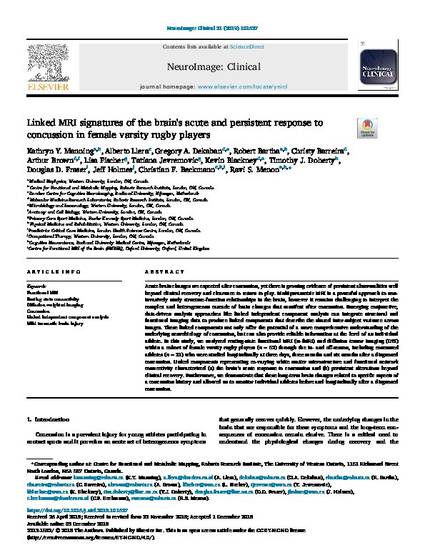
Acute brain changes are expected after concussion, yet there is growing evidence of persistent abnormalities well beyond clinical recovery and clearance to return to play. Multiparametric MRI is a powerful approach to non-invasively study structure-function relationships in the brain, however it remains challenging to interpret the complex and heterogeneous cascade of brain changes that manifest after concussion. Emerging conjunctive, data-driven analysis approaches like linked independent component analysis can integrate structural and functional imaging data to produce linked components that describe the shared inter-subject variance across images. These linked components not only offer the potential of a more comprehensive understanding of the underlying neurobiology of concussion, but can also provide reliable information at the level of an individual athlete. In this study, we analyzed resting-state functional MRI (rs-fMRI) and diffusion tensor imaging (DTI) within a cohort of female varsity rugby players (n = 52) through the in-and off-season, including concussed athletes (n = 21) who were studied longitudinally at three days, three months and six months after a diagnosed concussion. Linked components representing co-varying white matter microstructure and functional network connectivity characterized (a) the brain's acute response to concussion and (b) persistent alterations beyond clinical recovery. Furthermore, we demonstrate that these long-term brain changes related to specific aspects of a concussion history and allowed us to monitor individual athletes before and longitudinally after a diagnosed concussion.
Available at: http://works.bepress.com/arthur-brown/36/
